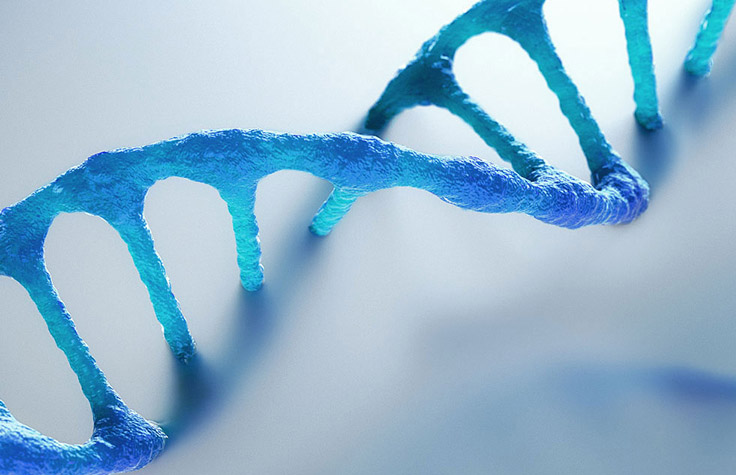Adapter Ligation
Uniformity, Precision and Reliability in Library Preparation
Ligation technology offers flexibility for many study designs, now with fewer steps

Evolving Adapter Ligation
Adapter ligation technology has long been known for high coverage uniformity, precise strand information, and reliable library preparation, even from degraded samples.
Now it’s even better. A universal, methylated adapter design incorporates an index sequence at the initial ligation step. There are fewer purification, sample transfer, and pipetting steps. It all adds up to improved workflow efficiency and more robust multiplex sequencing.
What is Adapter Ligation Technology?
Ligation technology is used to construct NGS libraries for sequencing. The process uses an enzyme to connect specialized adapters to both ends of DNA fragments. An 'A'- base is added to the blunt ends of each strand, preparing them for ligation to the sequencing adapters. Each adapter contains a 'T'-base overhang, providing a complementary overhang for ligating the adapter to the A-tailed fragmented DNA.
How Does Our Technology Compare?
Illumina adapter ligation is the technology of choice, cited in over 9,926 publications since 2011. Adapter ligation contains the full complement of sequencing primer hybridization sites for single, paired-end, and indexed reads. This eliminates the need for additional PCR steps to add the index tag and index primer sites. Gel-free protocols eliminate the time-intensive gel purification step found in other methods, making the process more consistent and fully automatable.

Applications of Adapter Ligation Technology
Ligation technology makes RNA sequencing for high-throughput experiments more affordable, enabling gene expression profiling studies to be performed with NGS at a lower cost than arrays. It also provides a cost-effective DNA sequencing solution for large-scale whole-genome resequencing, targeted resequencing, de novo sequencing, metagenomics, and methylation studies.
This streamlined, rapid ligation-based library preparation supports low sample inputs and a wide range of RNA-Seq applications. Adapter ligation technology ideal is for applications such as RNA-Seq, genomic sequencing, or exome enrichment.
Frequently Purchased Together

Comparing Nextera and TruSeq Technologies
TruSeq uses adapter ligation, fragmentation, end repair, and has Poly(A) capture efficiency. It requires separate DNA shearing. It captures the coding transcriptome and is ideal for whole transcriptome RNA-Seq, exome enrichment, large-scale whole-genome resequencing, targeted resequencing, de novo sequencing, metagenomics, and methylation studies.
Nextera uses bead-linked transposome technology. Integrated DNA extraction, automatic fragmentation, library preparation, and library normalization are included in the protocol. It’s ideal for whole-genome sequencing and target enrichment applications.
Other Technologies to Meet Your Needs
Automation
Our partners have developed both high- and low-throughput walk-away automation methods that span our library prep portfolio.
Index Adapters
Increase the number of samples sequenced per run and optimize high-throughput sequencing using unique dual index adapters.
UMIs
Unique molecular identifiers (UMIs) provide error correction and accuracy. They can reduce false-positive variant calls while increasing variant detection sensitivity.